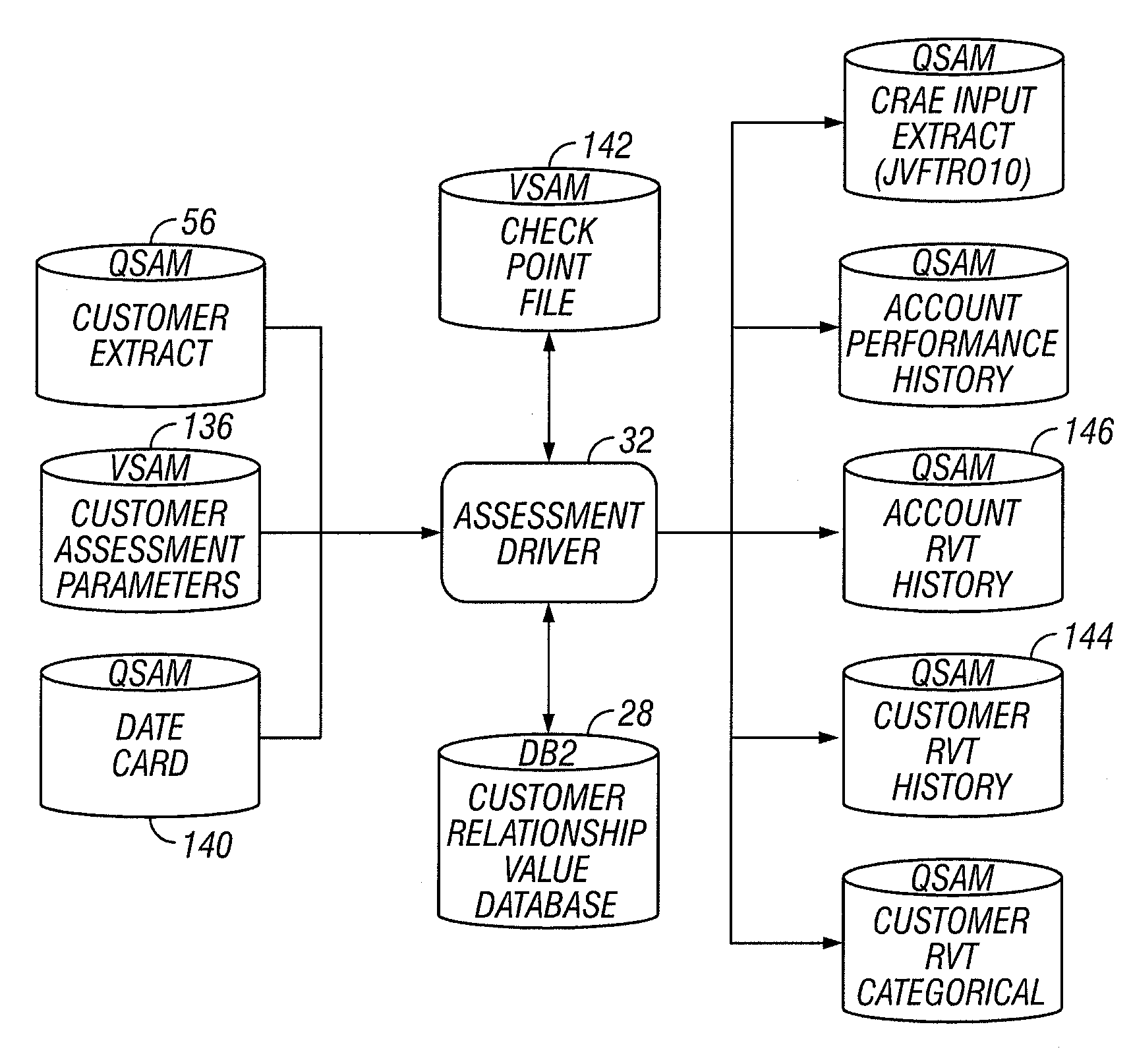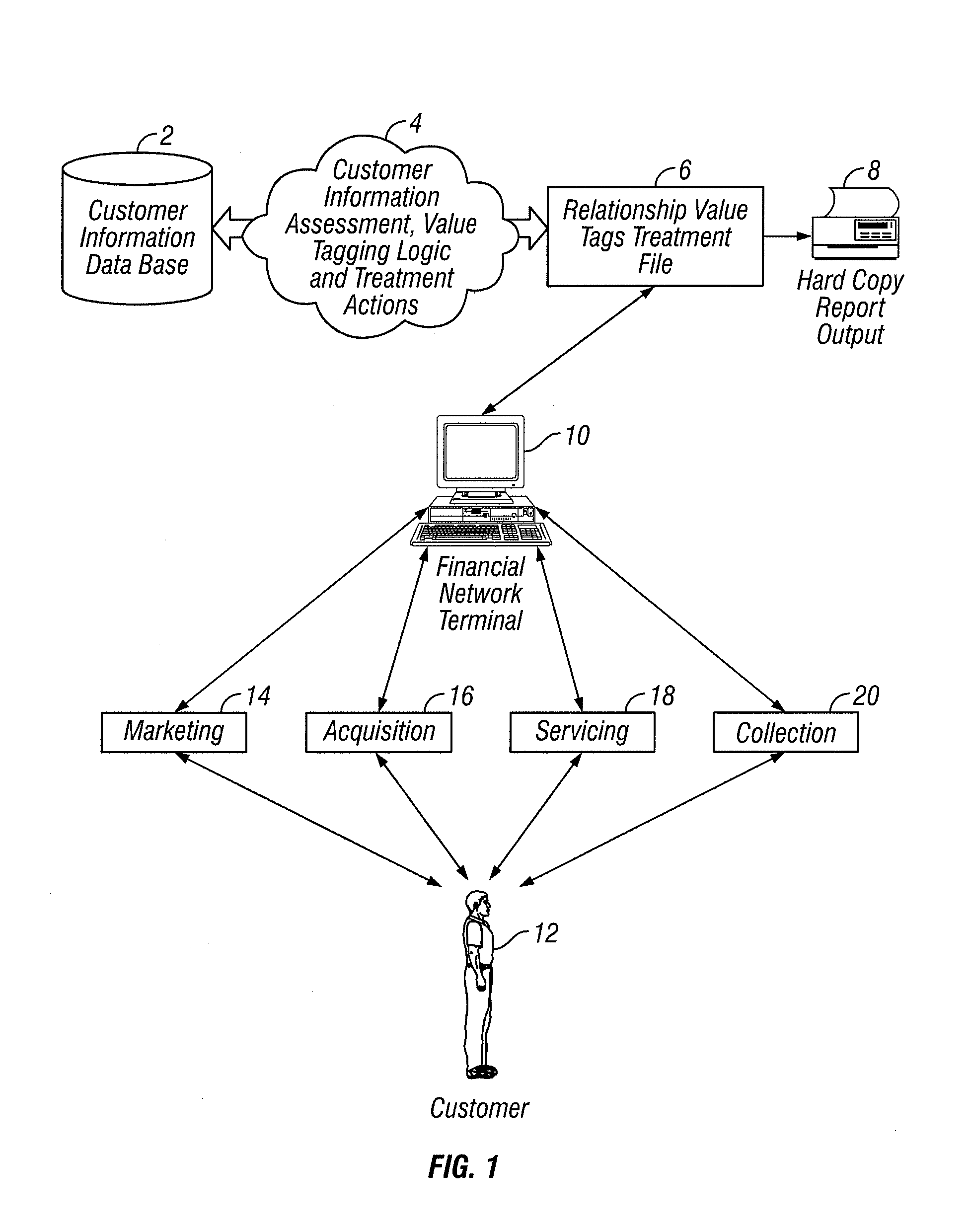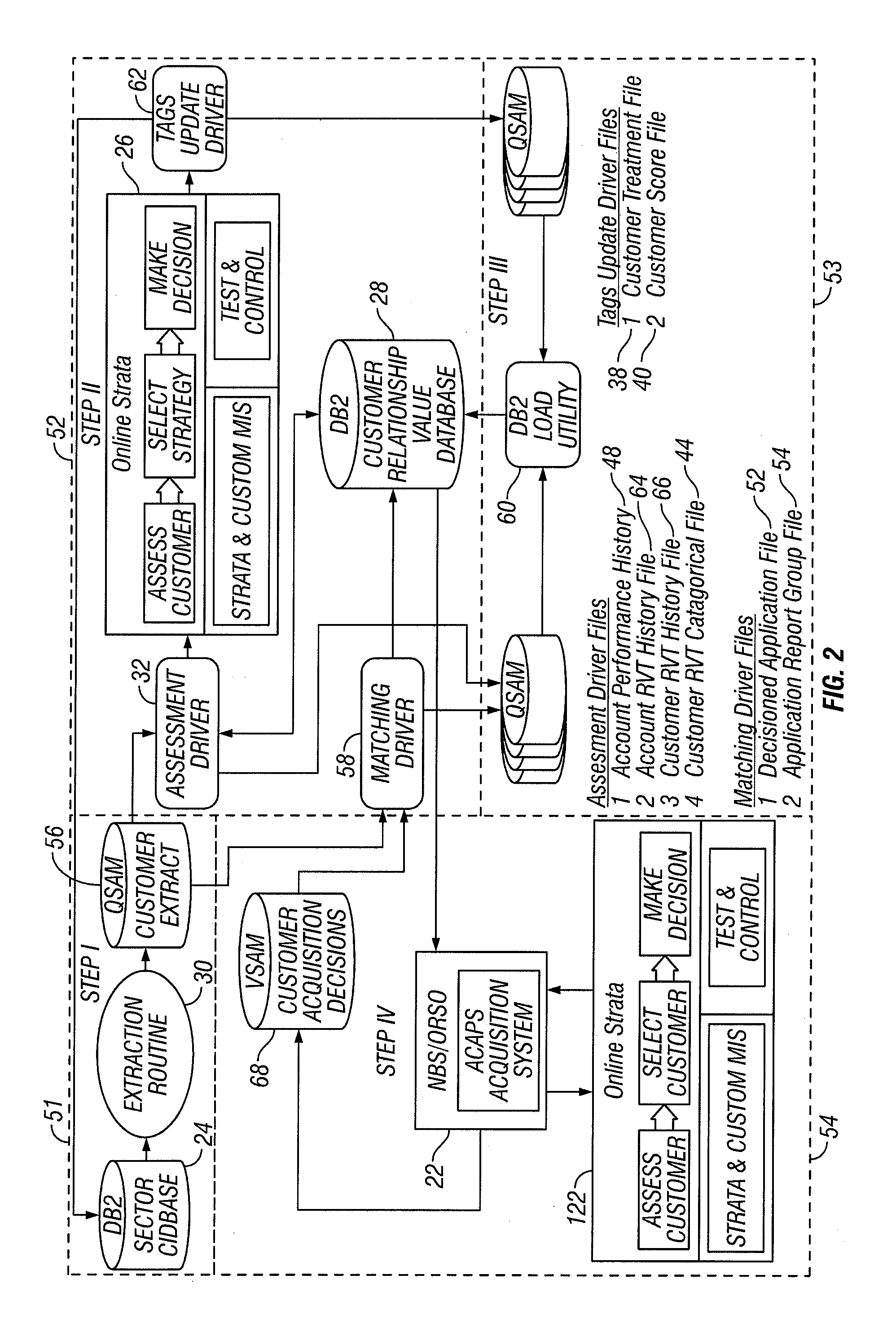Method and system for evaluating customers of a financial institution using customer relationship value tags
a financial institution and customer relationship technology, applied in the field of computerized evaluation of customers of financial institutions, can solve the problems of financial institutions not taking customer value into consideration, few have achieved true customer level cost accounting, complex calculation of customer level profitability, etc., to achieve the effect of maximizing revenue and profits, enhancing understanding of the behavior of each customer, and increasing revenues and profits
- Summary
- Abstract
- Description
- Claims
- Application Information
AI Technical Summary
Benefits of technology
Problems solved by technology
Method used
Image
Examples
Embodiment Construction
[0042]In an embodiment of the present invention, value tags provide insight into the value, preference, and behavior of a customer. While value tags measure the current value and expected value over time of a customer, other tags measure such things as propensity to open a loan account and likelihood of attrition. Value tags enable the financial institution to make the right decisions for the right customer at the right time. The database of a financial institution typically contains information on a large number of financial institution accounts. On a periodic basis, the servicing systems update the database with customer demographics, financial data, and transaction summary information. Internal customer information from the database of the financial institution is analyzed to develop current and future customer value algorithms. The current value algorithm measures the value of a customer across product holdings of the financial institution. The future value algorithm measures th...
PUM
 Login to View More
Login to View More Abstract
Description
Claims
Application Information
 Login to View More
Login to View More - R&D
- Intellectual Property
- Life Sciences
- Materials
- Tech Scout
- Unparalleled Data Quality
- Higher Quality Content
- 60% Fewer Hallucinations
Browse by: Latest US Patents, China's latest patents, Technical Efficacy Thesaurus, Application Domain, Technology Topic, Popular Technical Reports.
© 2025 PatSnap. All rights reserved.Legal|Privacy policy|Modern Slavery Act Transparency Statement|Sitemap|About US| Contact US: help@patsnap.com



